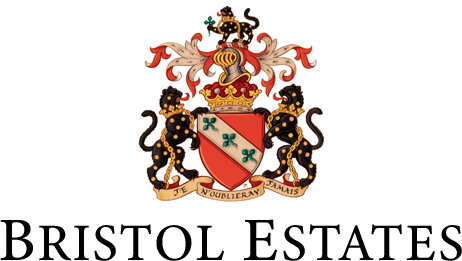High Steward
The present 8th Marquess of Bristol is also the current Hereditary High Steward of the Liberty of St Edmund. The first High Steward was known as Ralph and was appointed by William I, King of England (1028-87), better known as William the Conqueror. The Office of High Steward became a hereditary title in 1115 with the de Windsor family. The title has been held by the direct bloodline of the Marquess of Bristol since 1688 when Thomas Jermyn, 2nd Baron Jermyn (1633-1703) became High Steward. The 2nd Baron Jermyn is the great-great-grandfather of the 1st Marquess of Bristol. The Liberty of St Edmund covers almost the entire area of the former County of West Suffolk.
The Liberty of St Edmunds
The area of the Liberty was originally known as the “Eight and a Half Hundreds” which included the Hundreds of Thingoe, Thegwastre, Lackford, Risbridge, Blackbourn and Babergh, together with the Half Hundred of Cosford. Blackbourn and Babergh each counted as a “double hundred”. Thus, the combination of all these Hundreds totals Eight and a Half Hundreds. Today this area corresponds more or less to the entire former county of West Suffolk.
The role of the High Steward
The Office of High Steward is unique. The Liberty was a temporal jurisdiction (a rare privilege) whose origins derived from religious and ultimately Royal patronage. It was originally granted by Edward the Confessor, King of England to Abbot Baldwin of Bury St Edmunds Abbey in the 11th century. The title was confirmed by William the Conqueror, King of England. Prior to the Reformation the Liberty formed part of the extraordinary and powerful ecclesiastical rule over the greater part of Suffolk.
The effect of the grant of Royal charters to the Abbey was to replace the courts of the King by those of the Abbot throughout the Liberty. The High Steward was appointed to administer the Liberty in much the same way as the Sheriff acted for the county. The High Steward would oversee the administration of Borough Courts. The High Steward had considerable influence and power, and was also known as the Chief Steward, or Capital Seneschal.
The Office of Steward has been described as a ‘Sergeanty’. The Liberty was excluded from the Sheriff’s jurisdiction - the Sheriff being the representative of the Crown. Thus, the High Steward appointed by the Abbot replicated the role of the Sheriff responsible to the King in the county. The High Steward administered the Liberty of St Edmund as a Sheriff would have.
The duties of the High Steward included the return and execution of writs, the levying of fines and amercements, and appearing yearly at the Exchequer to render his account. Thus, although the annual accounting to the Exchequer normally would have been made by the Sheriff, in the case of the Liberty of St Edmund it was made by the High Steward. The duties of the High Steward extended to presiding over the Courts of the Liberty and of each Hundred (replacing the Courts of the Crown), and to the arrest and custody of prisoners. He was also responsible for the general administration of the area on behalf of the Abbot, who held the Liberty from the Crown.
The concern of the High Steward was to address the good governance of the whole Liberty and the maintenance of law and order.
Deputy Stewards
The role of High Steward was often exercised by a Deputy Steward appointed by the High Steward for that purpose. There is a statement made after the death of John de Hastings in 1375 that the Hastings family had from ‘time immemorial’ appointed Deputy Stewards for life (the Hastings family inherited the title with Ralph de Hastings in 1115). The appointment of Deputy Stewards continued throughout the centuries. In 1567 Thomas Howard, 4th Duke of Norfolk, granted the office of Deputy Steward, jointly to Thomas Kytson of Hengrave and Thomas Andrews.
The High Stewards before the Herveys
Ralph was created High Steward by William the Conqueror, King of England (1028-87). Subsequently, the High Steward was granted by Abbot Albold to Maurice de Windsor, and his heirs. It is from that point in time that the High Stewardship of the Liberty of St Edmund became a hereditary title.
In 1115 the Office of High Steward descended by hereditary to the nephew of Maurice de Windsor, Ralph de Hastings, who succeeded to the title. He was then succeeded by his nephew, Ralph de Hastings.
The de Hastings family continued to hold the Office of High Steward until the latter part of the 16th century. The Office then passed through a number of important families, including the Howards. One of the High Stewards was Thomas Howard, the Third Duke of Norfolk.
The Office of High Steward thereafter remained in the hands of the Howard family until 1688 when Thomas Jermyn, 2nd Baron Jermyn (1633-1703) became High Steward. In 1722 the holder was Sir Robert Davers. On the death of Sir Charles Davers in 1806 the baronetcy became extinct, and the title of High Steward then descended to Frederick, 5th Earl, and later 1st Marquess of Bristol, as heir to the title through his mother, Elizabeth, daughter of Sir Jermyn Davers, and a sister of Sir Charles Davers. It has remained in the Hervey family ever since.
The image on the right shows the 8th Marquess of Bristol, and present Hereditary High Steward of the Liberty of St Edmund holding a grant made by various Kings and popes to the Abbey of St Edmund c 1350-75 standing by two of the pillars from the Bury St Edmunds abbey begun by Abbot Baldwin in 1080. This is where St Edmunds body was enshrined. The image comes from “Keepers of the Kingdom” by Julian Calder 2002




